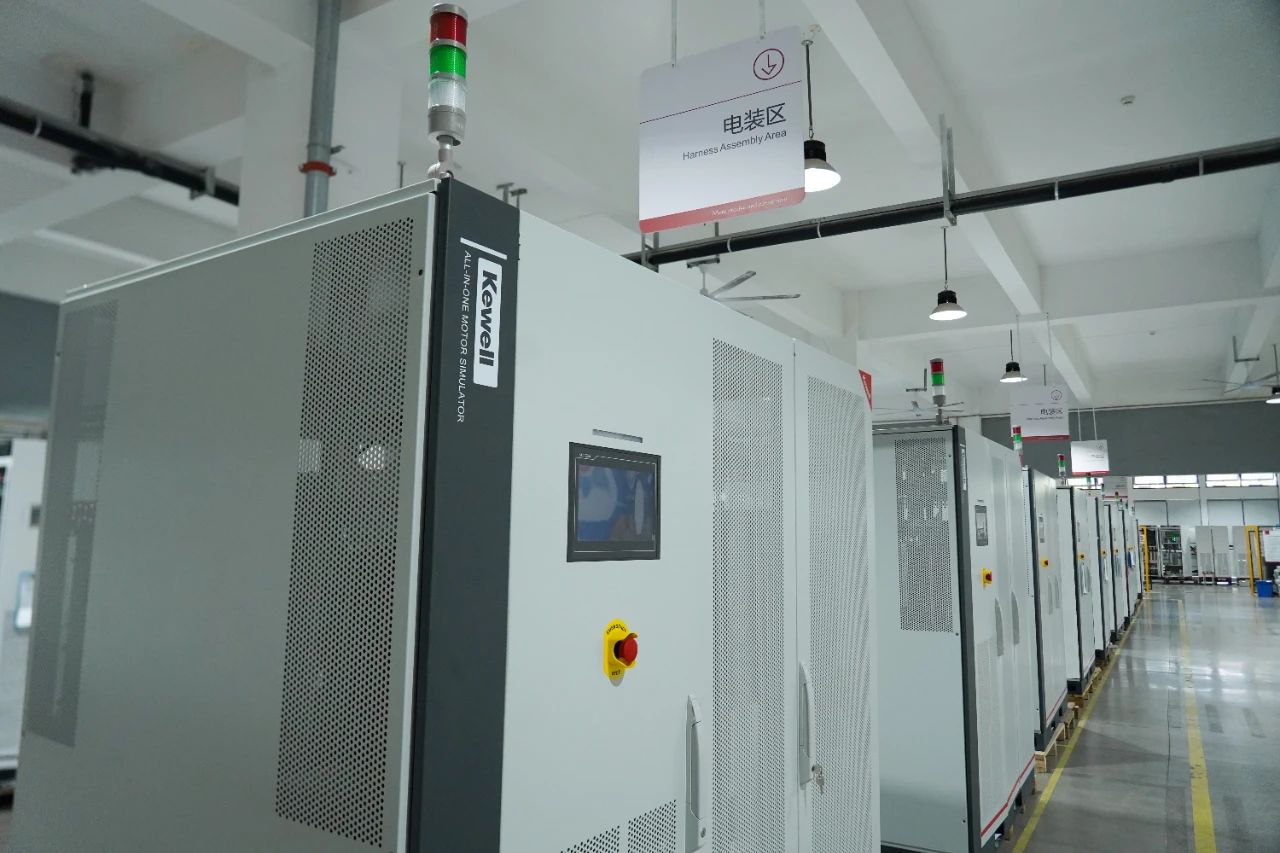On October 11, Kewell held at its headquarters in Hefei a ceremony for the batch delivery of more than 100 sets of integrated E-motor Emulator (EME). The shipped equipment underwent comprehensive testing in strict accordance with the customer’s technical agreement and Kewell’s factory standards, with all functions and performance indicators meeting the target technical requirements. This provides great support for the precise and efficient product end of life (EOL) testing of a benchmark customer in the industry.

The Kewell D2300 series E-motor Emulator is a novel static power electronic device that integrates motor and load simulation. Its main circuit employs high-speed power switching devices, while its control and model computation units adopt multi-core high-speed DSP+FPGA processor. Under various operating conditions and PWM variable-frequency drive conditions, it can accurately simulate motor and load characteristics. Furthermore, based on system operating point status monitoring and parameter calculation, it can evaluate the multi-dimensional control performance of electric drive systems online. Compared to conventional motor test benches, the Kewell D2300 series EME exhibits great advantages in terms of energy conservation, environmental friendliness, flexibility of configuration, safety, and reliability.

A glimpse of the production line
Motor Controller Testing Solutions
Addressing the R&D and testing requirements of motor controllers, the E-motor Emulator can simulate the output characteristics of permanent magnet synchronous motors (PMSMs) and AC asynchronous motors. It supports fault injection, nonlinear simulation, speed and torque simulation, etc. to meet customers’ requirements for verifying the function and performance of motor controllers. This alternative to conventional electric drive test benches simplifies the experimental platform, and provides a safer and more convenient solution.

For motor controller EOL testing, the integrated EME features two output channels. The DC output supports the simulation of LiFePO4, NCM, and other types of traction batteries, while the AC output supports motor simulation and fault injection functions. It replaces the motor and its mechanical load in the conventional test bench system, enabling rapid EOL testing of drive motor controllers of various specifications.

With the continuous advancement of electric vehicle technology, the prevalence of 800V high-voltage platforms has become a new trend in the industry. The internal driving force behind the shift to higher voltages lies in the need for super-fast charging and increased power. Addressing the battery anxiety of electric vehicle drivers by adopting high-voltage fast charging has also become an industry consensus. Closely following industry trends, Kewell has been transitioning from customization to product standardization, achieving batch detection based on an extensive coverage of testing, significantly improving testing efficiency. The energy recovery feature of the testing equipment enhances customers’ energy efficiency. Furthermore, Kewell integrates multiple testing items of electric vehicles, batteries, motor controllers, and motors.







 Position:
Position:


 With the continuous advancement of electric vehicle technology, the prevalence of 800V high-voltage platforms has become a new trend in the industry. The internal driving force behind the shift to higher voltages lies in the need for super-fast charging and increased power. Addressing the battery anxiety of electric vehicle drivers by adopting high-voltage fast charging has also become an industry consensus. Closely following industry trends, Kewell has been transitioning from customization to product standardization, achieving batch detection based on an extensive coverage of testing, significantly improving testing efficiency. The energy recovery feature of the testing equipment enhances customers’ energy efficiency. Furthermore, Kewell integrates multiple testing items of electric vehicles, batteries, motor controllers, and motors.
With the continuous advancement of electric vehicle technology, the prevalence of 800V high-voltage platforms has become a new trend in the industry. The internal driving force behind the shift to higher voltages lies in the need for super-fast charging and increased power. Addressing the battery anxiety of electric vehicle drivers by adopting high-voltage fast charging has also become an industry consensus. Closely following industry trends, Kewell has been transitioning from customization to product standardization, achieving batch detection based on an extensive coverage of testing, significantly improving testing efficiency. The energy recovery feature of the testing equipment enhances customers’ energy efficiency. Furthermore, Kewell integrates multiple testing items of electric vehicles, batteries, motor controllers, and motors.
